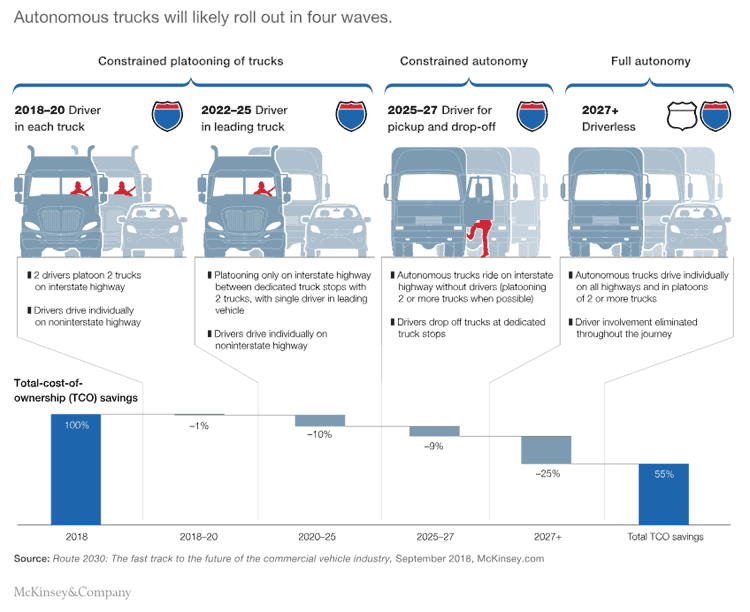There was big news in the trucking sector in the last couple of weeks, as leading manufacturer Daimler announced at an industry conference that it was abandoning its investments in so-call platooning technology - in which small convoys of 2-3 trucks travel together, using technology to synchronize movement and braking.
The effect is to allow less space between trucks, reducing drag and improving fuel mileage.
But not enough, Daimler says, claiming the operational savings weren't enough to justify the technology.
That came as something of a shock, as many had viewed platooning as a bridge to truly autonomous trucks down the road.
Those in that camp include the consultants at McKinsey, which in December issues a report that included the graphic below, which lays out four stages on the road to fully autonomous freight transport.

Interesting given the news from Daimler, McKinsey does see platooning - first with drivers in each truck, then later just in the lead truck - as key to the full evolution to driverless trucks.
Only the future will prove who is correct, but we will note the CEO of platooning technology provider Pelaton said the issue with Daimler might have been inferior technology that didn't deliver adequate savings.
Any Feedback on our Supply Chain Graphic of the Week? Let us know your thoughts at the Feedback section below.
Your Comments/Feedback
|